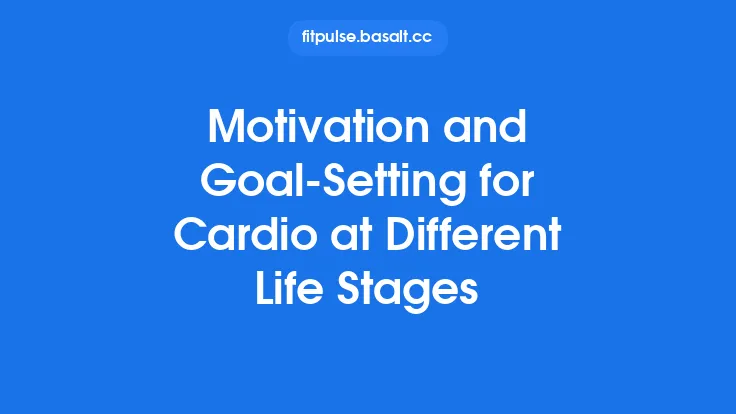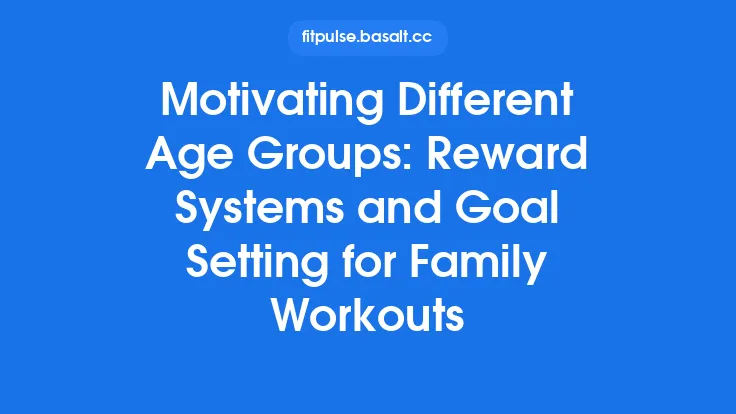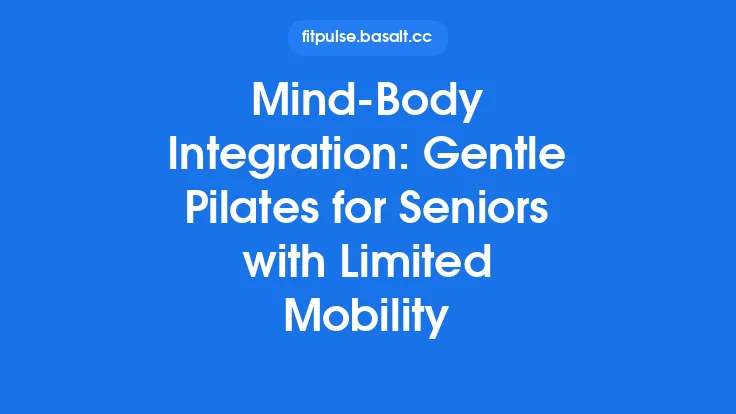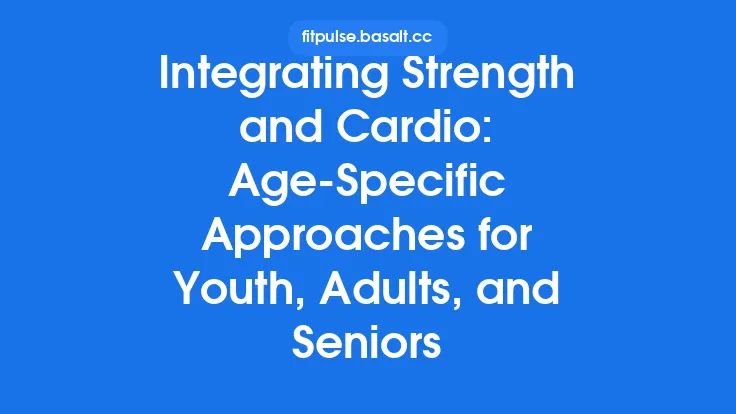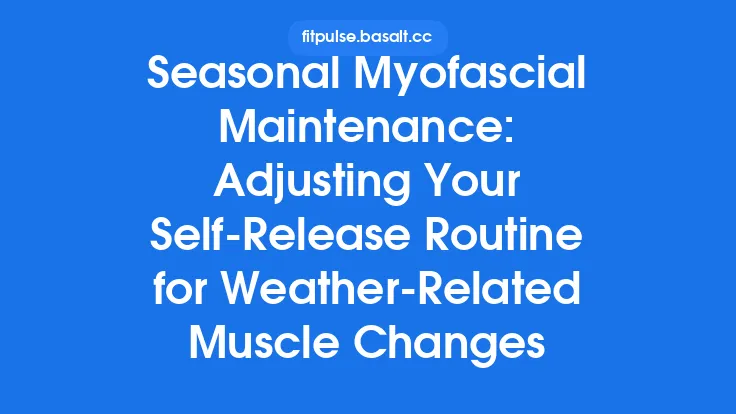Calisthenics is often celebrated for its simplicity—using only the weight of the body to build strength, mobility, and endurance. Yet the true power of this discipline lies not just in the muscles it sculpts, but in the intricate dialogue it creates between mind and body. Across the span of a human life, the neurological, hormonal, and psychological landscapes shift dramatically, and a one‑size‑fits‑all approach to movement quickly becomes inadequate. By attuning training to the evolving mind‑body connection at each life stage, practitioners can extract deeper benefits, sustain motivation, and nurture long‑term health far beyond the visible gains of a pull‑up or a push‑up.
Understanding the Mind‑Body Axis in Calisthenics
The mind‑body axis refers to the bidirectional communication pathways that link mental states with physiological responses. In the context of calisthenics, three primary systems mediate this relationship:
- Neural Plasticity – Repetitive movement patterns remodel cortical maps, enhancing motor unit recruitment and coordination. The degree of plasticity is highest during early developmental windows but remains present throughout adulthood, albeit at a slower rate.
- Endocrine Feedback – Hormones such as cortisol, testosterone, growth hormone, and insulin‑like growth factor‑1 (IGF‑1) respond to both the mechanical stress of training and the emotional context in which it occurs. A session performed under stress can blunt anabolic signaling, while a session paired with positive affect can amplify it.
- Autonomic Regulation – The sympathetic‑parasympathetic balance governs heart‑rate variability (HRV), blood flow, and recovery capacity. Mindful breathing and focused attention can shift this balance toward parasympathetic dominance, promoting faster recovery and better performance.
When these systems are harmonized, the practitioner experiences what athletes call “flow”—a state of effortless concentration where movement feels natural, and the perception of effort diminishes. Achieving flow is not a luxury reserved for elite athletes; it is a skill that can be cultivated at any age by deliberately shaping the mental context of each calisthenic session.
Early Adulthood: Harnessing Neuroplasticity and Identity Formation
In the late teens through the thirties, the brain remains highly receptive to new motor patterns, and individuals are often in the process of defining personal identity. Calisthenics can serve as a powerful vehicle for both physical and psychological development when approached with the following mind‑body considerations:
- Exploratory Mindset – Rather than rigidly adhering to a preset routine, encourage curiosity. Trying novel progressions (e.g., hand‑stand variations, planche leans) stimulates the motor cortex and reinforces a growth‑oriented self‑concept.
- Goal Framing as Narrative – Position training milestones within a personal story (“I’m building the strength to climb the mountain I’ve always dreamed of”). Narrative framing engages the limbic system, increasing dopamine release and reinforcing adherence.
- Self‑Compassion in Skill Acquisition – Early adulthood often brings perfectionism. Practicing self‑compassion—recognizing that setbacks are part of learning—reduces cortisol spikes that can otherwise impede synaptic consolidation.
- Cognitive Load Management – Multitasking (e.g., listening to podcasts while training) can dilute attentional resources, diminishing motor learning. Prioritizing single‑task focus during skill‑intensive segments (like learning a new static hold) maximizes neural encoding.
By aligning training with the brain’s natural propensity for change and the individual’s quest for self‑definition, calisthenics becomes a conduit for lasting confidence and functional competence.
Mid‑Life: Balancing Stress, Hormones, and Functional Resilience
Between the early thirties and early fifties, life often introduces heightened responsibilities—career pressures, family obligations, and the early signs of physiological aging. The mind‑body connection at this stage is characterized by a tug‑of‑war between chronic stressors and the body’s diminishing anabolic capacity.
- Stress‑Responsive Training – Incorporate brief, intentional mindfulness pauses before and after high‑intensity sets. A 30‑second diaphragmatic breath reset can lower sympathetic tone, curbing cortisol’s catabolic influence on muscle protein synthesis.
- Hormonal Awareness – Testosterone and growth hormone levels naturally decline. While calisthenics alone cannot reverse this trend, training performed in a psychologically positive state (e.g., after a gratitude ritual) can modestly boost acute hormonal spikes, supporting tissue repair.
- Functional Prioritization – Emphasize movement patterns that translate directly to daily tasks—squat mechanics for lifting children, core stability for prolonged sitting, and shoulder mobility for desk work. This functional relevance reinforces intrinsic motivation, a key driver of sustained engagement.
- Mental Resilience Through Mastery – Achieving a new static hold or a full push‑up after a period of stagnation provides a tangible proof of competence, counteracting the “mid‑life slump” narrative. Celebrate these micro‑wins to stimulate the brain’s reward circuitry, fostering a resilient mindset.
By treating calisthenics as a stress‑modulating practice rather than merely a strength‑building regimen, mid‑life practitioners can preserve both physiological function and psychological well‑being.
Later Years: Cultivating Presence, Mobility, and Cognitive Vitality
From the mid‑fifties onward, the body’s regenerative capacity slows, joint cartilage thins, and the risk of neurodegenerative decline rises. Yet the mind‑body axis offers a potent counterbalance: regular, mindful movement can preserve cognitive function, maintain joint health, and nurture a sense of agency.
- Embodied Mindfulness – Slow, controlled calisthenic flows (e.g., a deliberate sequence of assisted squats, gentle bridges, and seated twists) encourage proprioceptive awareness. This heightened body sense has been linked to improved balance and reduced fall risk.
- Neurocognitive Stimulation – Complex movement patterns that require coordination (such as alternating leg‑to‑hand reaches) activate prefrontal and cerebellar networks, supporting executive function and memory retention.
- Emotional Regulation – The rhythmic nature of breath‑synchronized calisthenics can activate the vagus nerve, promoting parasympathetic dominance and reducing anxiety—a common concern in later life.
- Legacy Mindset – Framing training as a means to remain active for grandchildren, community involvement, or personal hobbies creates purpose‑driven motivation, which is strongly associated with longevity and mental health.
In this stage, the emphasis shifts from maximal performance to sustained presence, where each movement becomes an act of mindful stewardship over the body’s remaining capacities.
Psychological Strategies for Sustainable Practice Across Ages
Regardless of age, certain mental techniques can fortify the commitment to calisthenics:
- Implementation Intentions – Formulate “if‑then” plans (“If it is 7 am, then I will complete a 10‑minute mobility routine”). This strategy automates behavior, reducing reliance on willpower.
- Self‑Monitoring with a Qualitative Lens – Instead of counting reps alone, note perceived effort, mood, and body sensations. Qualitative logs foster a deeper mind‑body dialogue and help identify patterns (e.g., higher stress days correlating with lower perceived exertion).
- Visualization – Mentally rehearsing a movement before execution primes motor pathways, improving technique and confidence.
- Social Modeling – Observing peers or mentors perform calisthenic skills can trigger mirror‑neuron activity, enhancing learning and motivation.
- Growth‑Oriented Feedback – Replace “I can’t do a handstand” with “I am improving my shoulder stability each session.” This reframing sustains dopamine release and mitigates fear of failure.
Integrating Breathwork and Somatic Awareness into Calisthenics
Breath is the most accessible lever for influencing the autonomic nervous system. Pairing breath patterns with specific calisthenic phases can amplify the mind‑body connection:
- Inhalation During Lengthening – For example, inhale while descending into a squat, allowing the diaphragm to expand and the thoracic spine to lengthen.
- Exhalation During Contraction – Exhale as you push up from a push‑up or press through a plank, engaging the core and facilitating intra‑abdominal pressure.
- Box Breathing for Transition – Between sets, practice a 4‑4‑4‑4 box breath (inhale‑hold‑exhale‑hold) to reset heart‑rate variability and sharpen focus.
- Somatic Scanning – Conduct a brief body scan before starting a session, noting areas of tension or ease. This practice heightens interoceptive awareness, allowing the practitioner to adjust intensity in real time.
When breath and movement are synchronized, the practitioner experiences a unified rhythm that reduces perceived effort and enhances motor efficiency.
The Role of Community and Social Connection at Each Life Stage
Human beings are inherently social, and the communal aspect of calisthenics can reinforce the mind‑body bond:
- Early Adulthood – Group challenges (e.g., a 30‑day push‑up streak) foster accountability and a sense of belonging, crucial for identity formation.
- Mid‑Life – Training circles that incorporate family members or coworkers can blend social interaction with functional fitness, reducing isolation.
- Later Years – Low‑impact class formats or intergenerational workshops provide safe environments for movement while nurturing social ties that combat loneliness.
The shared experience of effort, progress, and occasional failure creates empathy and collective resilience, amplifying the psychological benefits of individual training.
Monitoring Mental and Physical Feedback: A Holistic Approach
A truly tailored calisthenic practice relies on continuous feedback loops:
| Domain | Key Indicators | Practical Check‑In |
|---|---|---|
| Cognitive | Clarity, focus, memory recall | Brief mental quiz after a session (e.g., recall three movement cues) |
| Emotional | Mood, stress level, motivation | 1‑5 Likert scale rating before and after training |
| Physiological | HRV, resting heart rate, sleep quality | Wearable metrics or simple pulse check upon waking |
| Somatic | Joint comfort, muscle tension, perceived exertion | Body‑scan journal entry post‑workout |
By reviewing these data points weekly, practitioners can adjust training intensity, breathing emphasis, or mindfulness duration to align with their current mind‑body state, ensuring progression without overreach.
Future Directions: Research and Emerging Practices in Lifespan Calisthenics
The scientific community is increasingly recognizing the symbiosis between movement and mental health. Emerging areas that promise to deepen our understanding of the mind‑body connection in calisthenics include:
- Neuroimaging of Flow States – Functional MRI studies are beginning to map the brain networks active during high‑concentration bodyweight sequences, offering insights into how to reliably induce flow.
- Epigenetic Responses to Mindful Movement – Preliminary data suggest that combining breath‑synchronized calisthenics with positive emotional framing can influence gene expression related to inflammation and neuroplasticity.
- Digital Biofeedback Platforms – Wearables that integrate HRV, galvanic skin response, and motion capture can provide real‑time cues to adjust breathing or focus, creating a closed‑loop training environment.
- Intergenerational Calisthenic Programs – Community‑based initiatives that pair younger and older participants are being studied for their impact on social cohesion, cognitive health, and functional independence.
As research evolves, the practical takeaway remains clear: aligning the mental narrative, emotional tone, and physiological state with the physical demands of calisthenics yields a richer, more sustainable practice—one that honors the unique needs of each life stage while fostering lifelong vitality.
